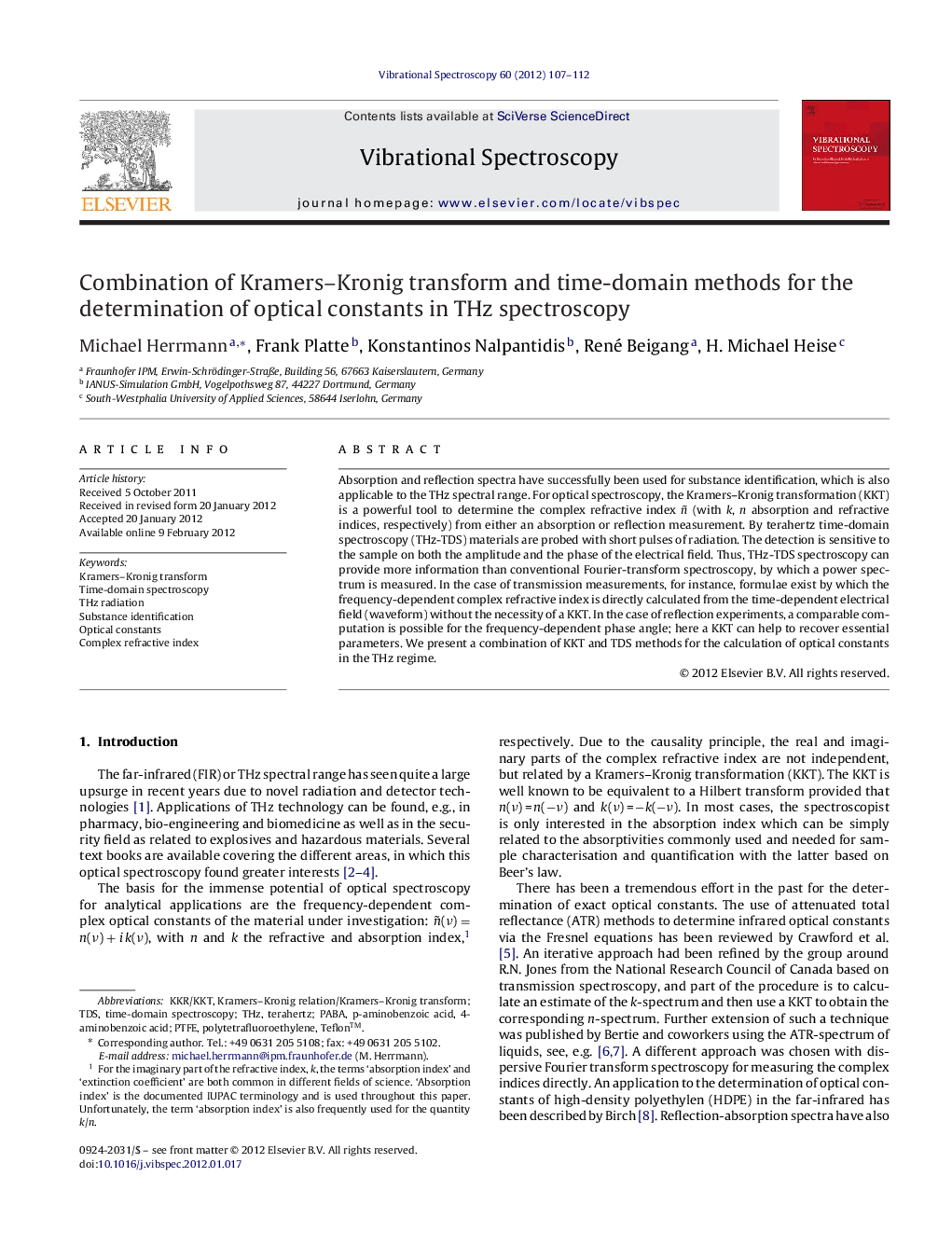| Article ID | Journal | Published Year | Pages | File Type |
|---|---|---|---|---|
| 1249613 | Vibrational Spectroscopy | 2012 | 6 Pages |
Absorption and reflection spectra have successfully been used for substance identification, which is also applicable to the THz spectral range. For optical spectroscopy, the Kramers–Kronig transformation (KKT) is a powerful tool to determine the complex refractive index n˜ (with k, n absorption and refractive indices, respectively) from either an absorption or reflection measurement. By terahertz time-domain spectroscopy (THz-TDS) materials are probed with short pulses of radiation. The detection is sensitive to the sample on both the amplitude and the phase of the electrical field. Thus, THz-TDS spectroscopy can provide more information than conventional Fourier-transform spectroscopy, by which a power spectrum is measured. In the case of transmission measurements, for instance, formulae exist by which the frequency-dependent complex refractive index is directly calculated from the time-dependent electrical field (waveform) without the necessity of a KKT. In the case of reflection experiments, a comparable computation is possible for the frequency-dependent phase angle; here a KKT can help to recover essential parameters. We present a combination of KKT and TDS methods for the calculation of optical constants in the THz regime.
